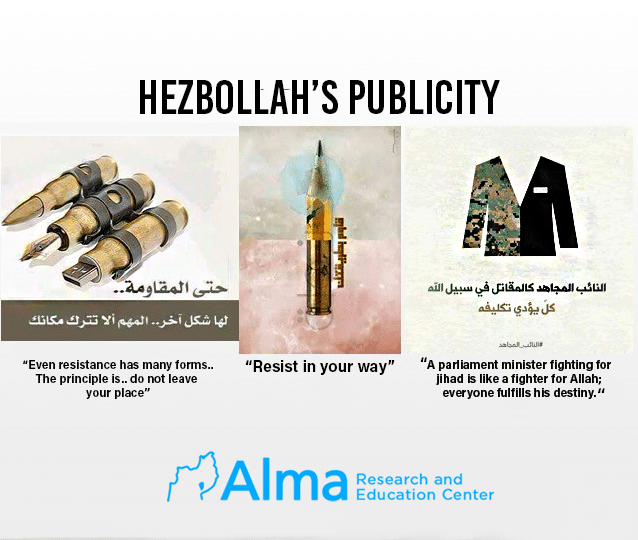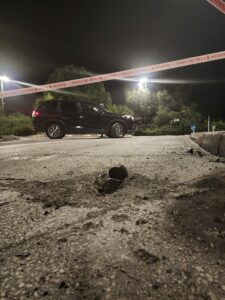This article is an introduction to a series of articles dealing with the structure of Hezbollah in general with the various councils and the executive council on its various civilian entities in particular, including key officials. All of these form a basis for supporting Hezbollah’s military infrastructure and enabling its military activity.
The ongoing day-to-day activities of the Executive Council’s civilian institutions support and assist Hezbollah’s military activities. Hezbollah espouses the “principle of non-separation” between its civilian activity and its military activity, and the “resistance society” ideology leads Hezbollah in all its actions, which is especially reflected in the implementation of the “human shield” tactic.
The Ruling Shura Council is Hezbollah’s Supreme Council and is headed by Hezbollah leader Hassan Nasrallah. Five designated councils are subordinate to it.
The Jihad Council, which is responsible for Hezbollah’s military activities, and the Executive Council, which is responsible for Hezbollah’s civilian activities. Alongside them, there are three other dedicated councils engaged in the legal, political, and state of affairs domains.
This current project focuses on the Executive Council headed by Hashem Safi al-Din. Al-Din is actually considered Hezbollah’s number 2 and is intended to replace Nasrallah (with the blessing of the Iranians) in due course. The purpose of this project is to detail the information about Hezbollah’s general structure in a set of articles (the Shura Council and its subordinate five designated councils) and to focus the reader’s attention on the nine areas of activity carried out by the Council and the 19 main civilian bodies subordinate to it.
The Executive Council manages Hezbollah’s daily activities in all areas except direct management of the sphere of military activity. However, the Executive Council’s actions affect, support, and integrate into Hezbollah’s military activity. This project will present many examples demonstrating the combination of civilian and military activity and the “principle of non-separation” between Hezbollah’s civilian and military infrastructures.


The activities of the Executive Council bodies and the examples given in this report are from the fields of communications, society, education, health, economics, trade unions, and the like.
Although the organizations operating under Hezbollah’s Executive Council are professional and organized bodies broadly deployed throughout Lebanon, serving a broad population, these are not formal institutions belonging to the Lebanese state. In fact, they compete with the corresponding formal Lebanese state institutions. This competition causes the decline of the formal state institutions, rendering them irrelevant. This process undermines the stability and sovereignty of the Lebanese state and strengthens the Iranian orientation in Lebanon.
Organizations such as these subordinate to Hezbollah’s Executive Council exist, in the same or similar configuration, in any regular sovereign state. However, while in a typical sovereign state, these institutions are intended for the civic interests of the state, the entities operating under the Executive Council are designed to create a dependency of the population on them and intended to act in Hezbollah’s interests, including supporting and taking part in military activities and objectives, not just civilian ones.







